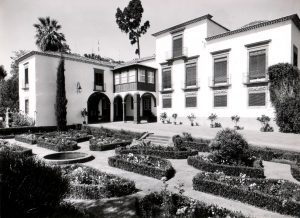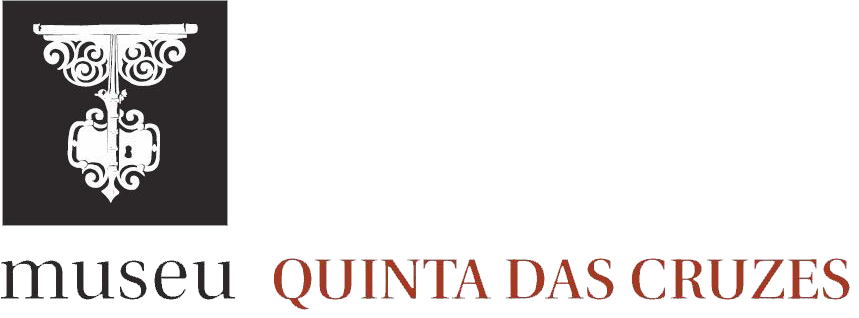
Perestrelos Collection
Without date
Officially opened to the public on May 28th 1953 under the name House Museum “César Gomes”¸ the formation of the Quinta das Cruzes Museum was based on the donation by the goldsmith César Filipe Gomes, followed by the legacy of the collector João Wetzler and various acquisitions which, as a whole, form a journey through the evolution of the Decorative Arts.
The history of the Quinta das Cruzes Museum started on December 19th 1946, the date of the signing of the Deed of Donation made to the Junta Geral do Distrito Autónomo do Funchal (General Council of the Autonomous District of Funchal) of the whole collection of objects of art and antiques belonging to César Filipe Gomes. This document states that the aforementioned donation of objects of artand antiques (furniture, ceramics, goldsmithery, jewellery, miniatures, engravings, paintings, sculpture, rugs, kilts etc.) was made for the express purpose of setting up an Art museum at Quinta das Cruzes. In compliance with the aforementioned deed, the General Council started a long process of negotiations with the then owners of Quinta das Cruzes (the Miguéis family), culminating in the expropriation of said Quinta, with the General Council and the owners having reached an agreement as to the amount of compensation, in accordance with a quittance signed on April 21st 1948.
On December 29th 1949 the first exhibition was inaugurated at Quinta das Cruzes, funnily enough, prior to its official inauguration as a Museum. This display, organised by the General Council Funchal under the title Exhibition of Old Engravings from Madeira, was included in the New Year’s Eve festival programme and was made up of 156 prints and 80 miscellaneous engravings from the 18th and 19th centuries, providing a broad perspective of regional customs and life, organised in a recreation of the age throughout six rooms.
This initiative was not unrelated with the visit to Madeira of Manuel Cayola Zagallo, Curator of the Ajuda National Palace and Assistant at the then Janelas Verdes Museum, having come here to study the installation of the new Quinta das Cruzes Museum despite the fact that the general intervention only started in around 1950.
The echo of this Exhibition on Madeiran cultural life was widespread and applauded by the local press, with various articles coming out on the notable event, taken as an exemplary initiative in the field of regional culture. In turn, the public lived up to the best expectations and there were around 5 000 visitors, a demand never seen before in Madeira and it even proved necessary to postpone the closure of the Exhibition.
Finally, on May 28th 1953, the House Museum “César Gomes” was officially opened to the public. Notable members of Madeiran cultural life were on the Museum Organising Committee, in particular José Leite Monteiro, Frederico de Freitas, accompanied by Ângelo Silva, Father Eduardo Pereira, Prof. Basto Machado and João Maria Henriques.
As a result of the cultural movement commenced thereby, an exhibition of the painter Francisco Maya was opened on September 6th 1953 which displayed some of his works in the rooms of the recently created Museum.
However, along with César Filipe Gomes, another “patron” made a major contribution to the estate of the Quinta das Cruzes Museum. Hans Wetzler, born in Vienna, Austria, arrived in the Island of Madeira in around 1939, a World War II refugee. This trader set up on the antiques’ market with some of the objects he bought on auctions, some of which were acquired in England where in the post-war period he encountered favourable market conditions, this having been the origin of a great number of the pieces in his collection.
In a sign of recognition to the Region, João Wetzler (the name he adopted after his naturalisation) bequeathed his silver collection to the Junta Geral do Distrito Autónomo do Funchal (General Council). But just like the first donator to this Institution, and in accordance with conditions set out in the provisions of his will, he made it a prerequisite that his collection be displayed at the Quinta das Cruzes Museum. In 1966, this legacy was officially incorporated in the estate of the Museum.
It is these two private collections, that of César Filipe Gomes and that of João Wetzler, which form the basis for the creation of the Quinta das Cruzes Museum. Consequently, it is also these two collections which will determine the direction taken by the House, which even today presides over the museological and museographic direction of this space. Besides these collections there are also various donations, as well as various acquisitions which have enriched as a whole the estate which is one of the most important in the Region.
Until the end of the 1970’s, the Museum remained the only museological institution under government remit which is why it was the depositary of many pieces donated and acquired which did not fall within the remit of its prime vocation.
Such were the cases of the clusters of Contemporary Art and Ethnography which were part of the estate of the Quinta das Cruzes Museum and which subsequently became part of the estate of two new museums: the Museum of Contemporary Art (Funchal) and the Ethnographic Museum of Madeira (Ribeira Brava), respectively.
The Quinta das Cruzes Museum integrates the Rede Portuguesa de Museus (Portuguese Museums Network) since 2002.
In accordance with the credential requirements of the Museums that integrate the Portuguese Net of Museums, according with the Law n.º 47/2004, of 19th of August, that approves the Law of the Portuguese Museums, the Quinta das Cruzes Museum hass the following regulations: Internal Regulation; Plan of Preventive Conservation; Politic of Incorporations; Regulation for the execution, reproduction, loan and acquisition of photographs and captation of images of cultural objects.
